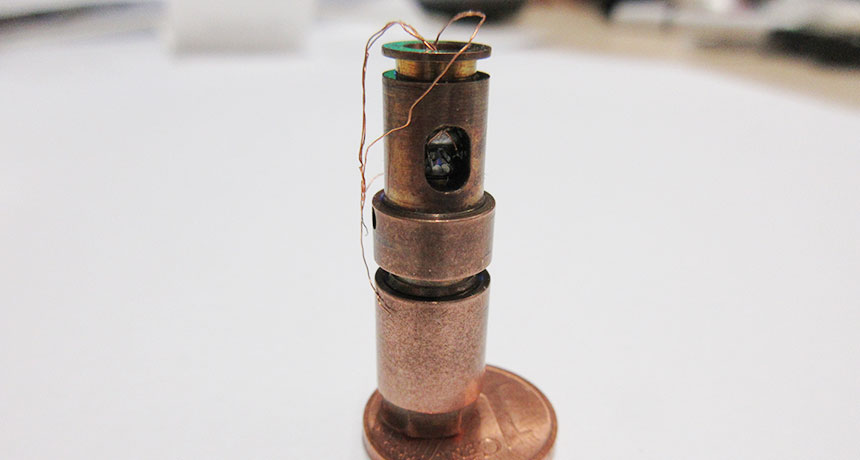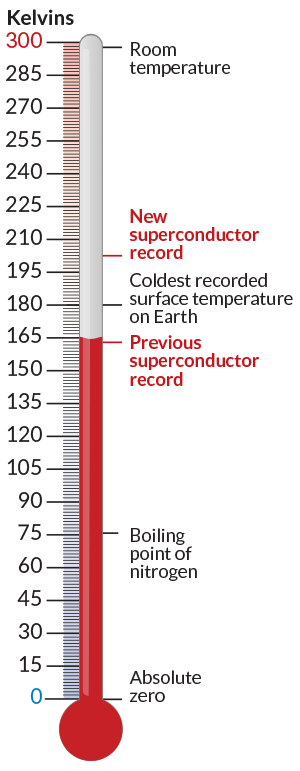
UNDER PRESSURE The compartment in the middle of this copper-titanium casing contains two diamonds that crush substances to enormous pressures. Experiments inside this apparatus showed that a hydrogen-sulfur compound is a superconductor at relatively high temperatures.
Mikhail Eremets








